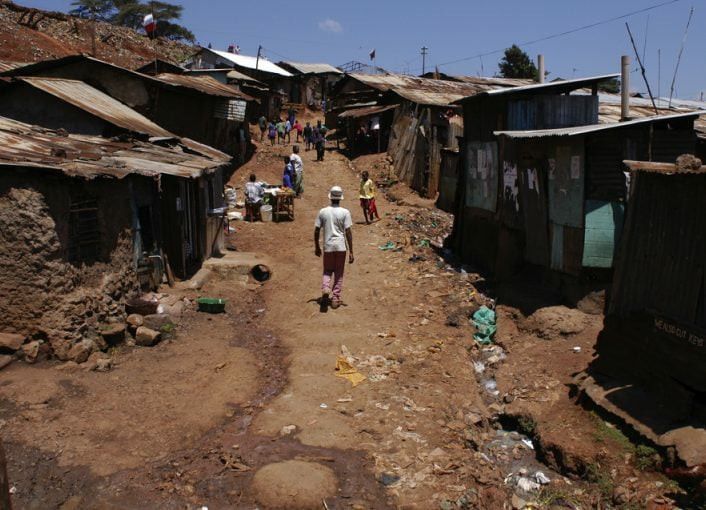Slums are becoming a major source of concern in modern-day city management. They are now a key indicator of a country’s wellness or level of development. Overall, at least one billion people are said to be slum dwellers worldwide.
Their continued existence is evidence of policy failure; not the policy in one or two sectors of the economy, but the entire national development policy measures of governments. It means that measures hitherto employed, such as forceful evictions, are not the solutions to the forces that generate and sustain slums.
Confronting the slums has also become a mark of enlightened self-interest on the part of government officials and the rich, some of whom are neighbours of the slum dwellers. If they are allowed to continue to wallow in their low-level existence, they can and do become sources of pain and agony for their rich neighbours.
Slums are those sub-human informal settlements characterised by low-quality, overcrowded housing; risk of forceful eviction; lack of safe, readily available water supplies, and poor provision for sanitation, drainage and solid waste collection. Such areas are also marked by lack of access to healthcare, emergency services and policing, difficulty accessing government schools, and locations at high risk of disasters and with risk levels increasing because of climate change, according to the UN-HABITAT.
The UN-HABITAT-16 declares that globally, one out of eight persons, or 12.5 per cent of the world’s inhabitants, lives in a slum. This means that more people than the average person thinks, actually live in small place and the implication of this is quite significant. Another study says, however, that one out of every three persons living in cities in the developing world lives in a slum.
Professor Paul Collier in his 2007 book, ‘The Bottom Billion: Why the Poorest Countries Are Failing and What Can Be Done About It,’ declares that such a staggering number living in slums presents an urgent problem that must be confronted by the world. He warns that “an impoverished ghetto of one billion people will be increasingly impossible for a comfortable world to tolerate”.
Beyond this average percentage of slum distribution, there are variations. Collier goes ahead to estimate that about 70 per cent of the Bottom Billion, those at the lowest rung of the ladder of development, are in Africa.
Indeed, Africa hosts about 10 of the world’s biggest slums. These include Kibera, located close to Nairobi, the Kenyan capital, the biggest slum in the continent. Most estimates put its population at about one million people. Its origin dates back to over 100 years ago.
Other major slums in Africa include Kroo Bay – located in the centre of Freetown, Sierra Leone; Mathare, Kenya; West Point, Monrovia, Liberia; Makoko, Lagos, and Korogocho, Kenya. Others still are Kawangware, Nairobi, Kenya; Kiambiu, Kenya; Agbogbloshie, Ghana, and Clara Town, Liberia.
Across Nigeria, the cities are strewn with slums of various sizes and population densities, all generally being overcrowded. From Lagos to Kano, Port Harcourt, Kaduna, Calabar, etc, there are slums that provide dwelling places for part of the bottom billion. But beyond this, the slums also now serve as breeding or nesting grounds for crime, drugs and gang culture in the urban areas.
Sometimes these activities are protests against clear unequal access to the things that make for the good life. Clearly, the life of a slum dweller, whether an individual or family, is a life of lack of access to assets, property, and jobs. Yet these are the things that generate earnings or incomes on which people’s livelihoods depend.
When crimes are committed in rich neighbourhoods, the police often track or chase the suspects to the slums. Whether this is considered stereotyping or not, the fact is that slums provide good places for crimes and criminals. Thus places such as Makoko, Ajenle, Mushin and Badia in Lagos, Gobirawa, Yan Yashi quarters located in Fagge Local Government Area of Kano State, and other such areas, are regular hosts to police and other security agents in their pursuit of criminals.
Take Lagos for instance. In 2013, the Lagos State Urban Renewal Agency (LASURA), identified nine major slums in the state. These are Ajegunle, Badia, Ilaje and Makoko. Others are Agege, Amukoko, Bariga, Ijeshatedo/Itire, and Iwaya. LASURA is still working on identifying more slums in the state, an official of the agency said.
Another study on Lagos slums painted a gloomier picture, with the declaration that as much as 60 per cent of the city’s residents live in slums! Given additional information that the number of people living in slums grows annually by 10 per cent, it is a little wonder then that the UN-HABITAT expects the global slum population to reach two billion by the year 2030, rising to 3.5 billion by 2050.
Some of the slums are natural habitats of certain groups of people, who find it difficult to live in place different from where they were born. This is the principal reason for the emergence of what has come to be known as waterfront slums. In these places, such as Makoko in Lagos, and the one in Port Harcourt, Rivers State, the dwellers are people whose occupation is based on the maritime world, chiefly fishing.
In some (or most) cases, slums co-exist with opulence. As you struggle to locate a certain slum, you may have to pass or go through a plush housing estate that is obviously beyond the reach of the slum dweller. That is the case of most of the waterfront slums in Lagos and Port Harcourt. For instance, Makoko, Agengule, Agege, etc, all the Lagos slums are usually next-door neigbhours to the affluent. Port Harcourt, the rich oil city, was once said to have half of its residents dwelling in slums.
The government and nongovernmental agencies involved in urban renewal projects have learnt some lessons on how not to address the issues of slum residents. It is evident that most of the time forceful ejection of the residents does not offer an effective solution. Such residents have learnt how to resist such a move. Perhaps from the experiences of others, they have become suspicious of the government’s real intentions in undertaking such ejections. Could it be to develop such places after the ejections and thereafter sell the land to those who can now afford the price?
Gentrification programmes designed to lift the conditions of our slums must be based on the plans to empower the dwellers in such a way that they can become productive, having acquired new skills, education and trades that can enable them to become active economic agents, not parasites that nobody wants around.
This also calls for measures to mitigate the forces that give rise to slums, such as the influx of people into the cities in search of better economic opportunities.

 Join Daily Trust WhatsApp Community For Quick Access To News and Happenings Around You.
Join Daily Trust WhatsApp Community For Quick Access To News and Happenings Around You.


